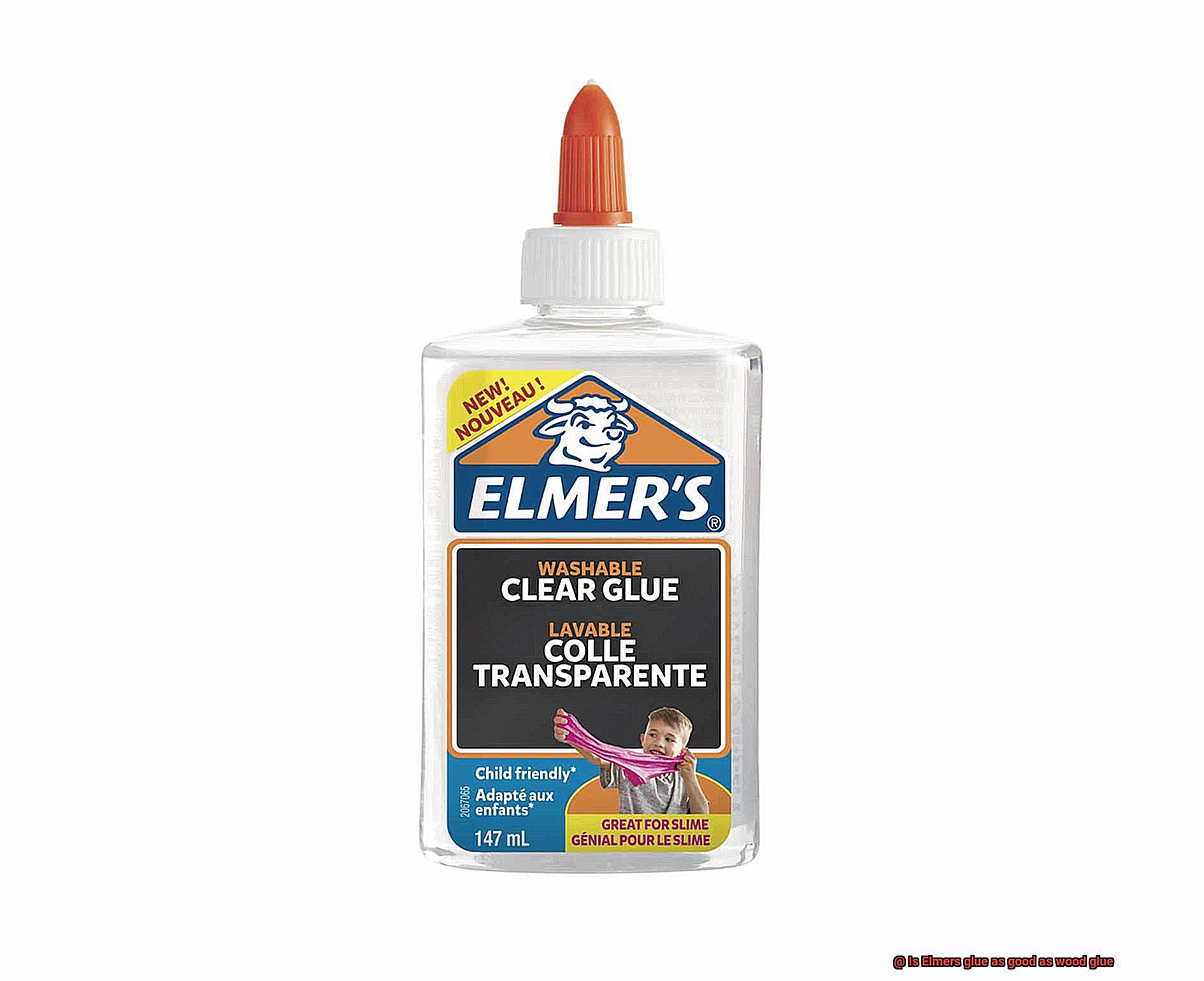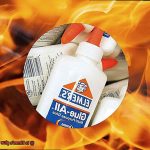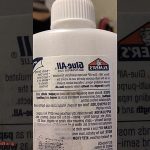Picture this: you’re about to embark on a thrilling woodworking project, filled with anticipation and a touch of nervous excitement. As you reach for the nearest adhesive, you’re faced with a perplexing decision – should you trust in the tried-and-true Elmer’s glue or invest in the specialized powers of wood glue?
If you’ve ever pondered, “Is Elmer’s glue as good as wood glue?” then grab a seat, because we’re about to dive headfirst into this sticky situation together.
In this blog post, we’ll journey into the captivating world of adhesives and shed light on the pros and cons of both Elmer’s glue and wood glue. When it comes to effectiveness, cost, and ease of use, these two contenders boast their own unique qualities that make them stand out in the cutthroat world of glues.
Effectiveness:
Contents
- 1 Characteristics and Properties of Elmer’s Glue
- 2 Characteristics and Properties of Wood Glue
- 3 Comparing Performance of Elmer’s Glue and Wood Glue
- 4 Advantages of Elmer’s Glue for Crafting Projects
- 5 Advantages of Wood Glue for Woodworking Projects
- 6 Drying Time Comparison between Elmer’s Glue and Wood Glue
- 7 Cost Comparison between Elmer’s Glue and Wood Glue
- 8 Conclusion
Elmer’s glue, a household name for many crafters and DIY enthusiasts alike, has proven its mettle across various applications. Its robust bond and versatility have made it a go-to choice for crafts, school projects, or lightweight woodworking endeavors.
On the other hand, wood glue is purposefully designed to conquer wooden surfaces with unparalleled strength and durability.
It seeps deep into those fibers, creating an unbreakable bond that will leave your wooden creations standing tall. So if woodworking is your game, wood glue takes home the gold medal in terms of effectiveness.
Cost:
Now let’s talk dollars and cents. Elmer’s glue definitely wins when it comes to cost efficiency. It’s widely available at pocket-friendly prices and can often be snagged in larger quantities without breaking the bank. In contrast, wood glue being a specialist adhesive might dig a little deeper into your wallet. However, when considering the sheer strength and longevity it brings to your wooden masterpieces, the investment is well worth it.
Ease of Use:
When it comes to ease of use, Elmer’s glue takes the crown with an effortless grace. Its smooth application, lightning-fast drying time, and easy clean-up make it a dream for quick fixes and projects with multiple steps. Meanwhile, wood glue may require a tad more patience as it takes its time to set. But fear not. Once fully dried, you can sand or paint over it, allowing for adjustments and ensuring precision in your woodworking endeavors.
In conclusion, both Elmer’s
Characteristics and Properties of Elmer’s Glue
When it comes to crafting and school projects, having a reliable adhesive is essential. Enter Elmer’s glue, a trusted brand known for its versatility and user-friendly characteristics. In this blog post, we will delve into the various properties and applications of Elmer’s glue to help you understand why it is a go-to adhesive for many crafters and DIY enthusiasts.
Composition and Bonding Power:
Elmer’s glue is primarily made from polyvinyl acetate (PVA), a synthetic polymer that forms a strong and flexible bond when it dries. This adhesive has the incredible ability to bond different materials together, including paper, fabric, wood, and certain plastics.
Easy Application:
Elmer’s glue stands out with its white color that ensures an even distribution when applied. Its viscosity is thicker than water, making it easy to handle without excessive dripping or runniness.
Repositioning and Drying Time:
Elmer’s glue allows for repositioning or adjustment of glued items while wet, thanks to its initially wet or tacky consistency. And when it comes to drying time, you won’t have to wait long – Elmer’s glue typically dries within 30 minutes to an hour, depending on temperature and humidity.
Strength and Durability:
Once dry, Elmer’s glue forms a clear and transparent bond that is resistant to yellowing over time. While it may not match the specialized strength of wood glues for woodworking projects, it remains a reliable choice for most crafting applications.
Non-Toxic and Easy Cleanup:
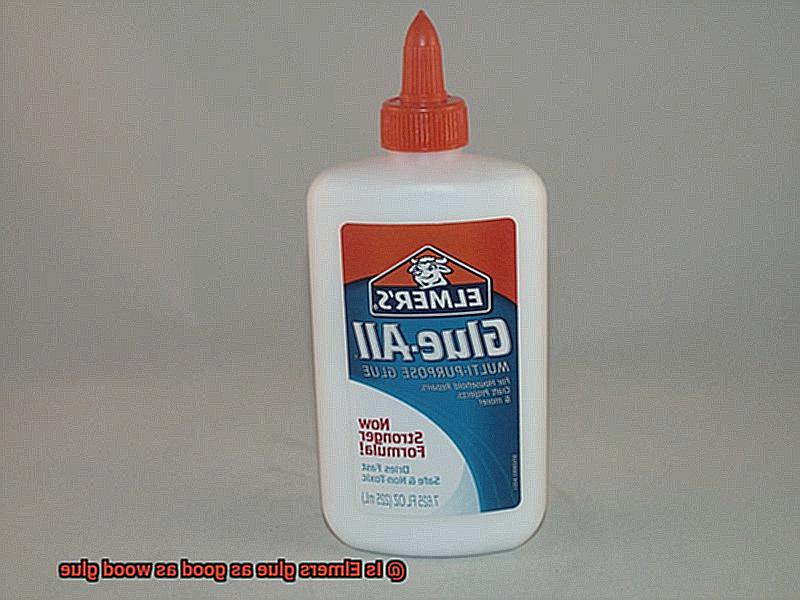
Elmer’s glue is non-toxic and safe for children to use in school projects and crafts. Plus, any accidental spills or excess glue can be easily cleaned up with water before it dries, minimizing the risk of permanent stains or surface damage.
Specialized Variations:
While Elmer’s glue is generally not waterproof or water-resistant when dry, some variations, like their Carpenter’s Wood Glue, offer enhanced water resistance and bond strength on wood surfaces. This makes it great for woodworking tasks that require added durability.
Characteristics and Properties of Wood Glue
Wood glue is an essential adhesive for woodworking projects, offering a range of characteristics and properties that ensure a strong and durable bond between wood surfaces. Let’s explore these key features in detail:
- High bonding strength: Wood glue is formulated to create a powerful bond between wood surfaces. It can withstand the stress and strain that wood materials undergo, providing stability and strength to your project. This ensures that your woodworking creations will stand the test of time.
- Excellent gap-filling properties: Wood glue excels at filling in small gaps or imperfections in wood surfaces. This ability ensures a tight and secure bond, even when working with uneven or rough wood. It creates a seamless connection between pieces, enhancing the overall aesthetic and structural integrity of your project.
- Water resistance: Wood glue is designed to withstand exposure to moisture and humidity without losing its adhesive properties. This makes it suitable for both indoor and outdoor woodworking applications. Whether you’re crafting furniture for your living room or building a deck in your backyard, wood glue will maintain its strength and durability in various environments.
- Longer open time: Unlike some other adhesives, wood glue has a longer open time, meaning it takes longer to dry. This extended timeframe gives you more flexibility to adjust and position the wood pieces before the glue sets. This is especially beneficial for complex or large-scale projects where precise alignment is crucial.
- Good sandability: Wood glue can be easily sanded down to achieve a smooth and seamless finish. This is particularly important for projects that require a polished appearance, such as furniture or cabinetry. With wood glue, you can achieve a professional look and feel with ease.
It’s important to note that there are different types of wood glue available, each with its own unique characteristics and properties. Some common types include yellow glue, white glue, and polyurethane glue. Each type may have specific advantages and limitations depending on your intended application. Therefore, it’s essential to select the appropriate wood glue for your specific woodworking needs.
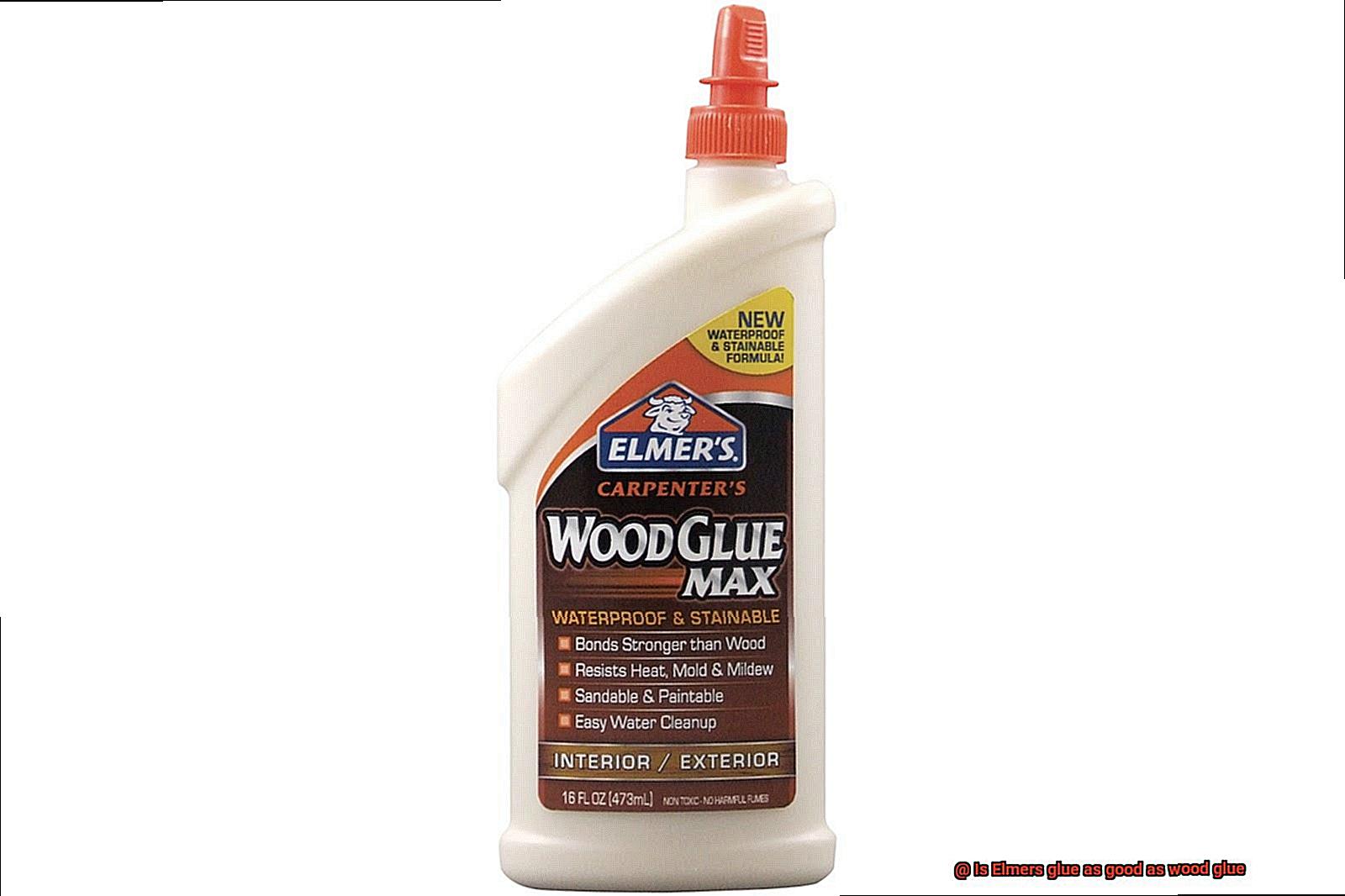
Comparing Performance of Elmer’s Glue and Wood Glue
When choosing between Elmer’s Glue and wood glue for your woodworking projects, several factors come into play. Strength, drying time, waterproofing, viscosity, and cost are all important considerations. In this blog post, we will compare the performance of these two glues to help you make the best decision. So let’s dive in and find the perfect adhesive for your woodworking needs.
Strength:
Wood glue is the undisputed superhero of adhesives when it comes to strength and bonding capabilities. It forms a powerful bond that withstands heavy-duty stress and strain, making it ideal for robust woodworking projects. On the other hand, Elmer’s Glue is reliable for general crafting and household use but may not provide the same level of strength as wood glue.
Drying Time:
If you require precise alignment and adjustment during assembly, wood glue is your go-to choice. Its longer drying time allows for flexibility in perfecting your project’s alignment. However, if you’re working on a quick craft or don’t need extensive adjustment time, Elmer’s Glue’s faster drying time may be more suitable.
Waterproofing:
When it comes to waterproofing, wood glue takes the crown. With waterproof variants or water-resistant additives available, it can withstand moisture and outdoor environments with ease. On the other hand, Elmer’s Glue is not inherently waterproof and may not provide the same level of protection against water damage.
Viscosity:
Wood glue outshines Elmer’s Glue when it comes to filling gaps and providing better coverage on uneven surfaces. Its higher viscosity allows for superior adhesion on challenging woodworking surfaces. In contrast, Elmer’s Glue has a lower viscosity, making it more suitable for general crafting applications.
Cost:
Considering budget constraints? Elmer’s Glue is generally more affordable and widely available compared to wood glue. The specialized formulation of wood glue for woodworking purposes may make it slightly pricier.
Advantages of Elmer’s Glue for Crafting Projects
Crafting is a magical world where imagination comes to life, and Elmer’s Glue is the enchanting wand that makes it all possible. This versatile adhesive is a crafting essential, offering a range of advantages that make it the go-to choice for many crafters.
First and foremost, the versatility of Elmer’s Glue is unparalleled. Whether you’re working with delicate paper, flowing fabric, sturdy cardboard, or even lightweight wood, Elmer’s Glue can handle them all with ease. No need to clutter your crafting space with multiple types of glue for different materials – Elmer’s Glue is the one glue to rule them all.
Not only is Elmer’s Glue versatile, but it’s also incredibly easy to use. The squeeze bottles allow for precise application, putting you in complete control of the amount of glue you use. No more messy mishaps or sticky situations. And the best part? It dries clear, leaving no trace of its magical touch on your finished project.
Safety is always a concern, especially when crafting with little ones. But fear not. Elmer’s Glue is a trusty companion that puts safety first. It’s non-toxic and completely safe for both adults and kids to use. So go ahead and enjoy those family-friendly crafting adventures without any worries.
Budget-friendly? Oh yes. Elmer’s Glue won’t break the bank. Compared to specialized glues like wood glue, it’s a steal. Plus, you can find it almost anywhere – from your local craft store to the nearest supermarket. So keep your crafting expenses low without compromising on quality.
Now, let’s talk about bonding strength. While Elmer’s Glue might not be as strong as wood glue for heavy-duty applications like woodworking or furniture construction, it still provides a reliable bond for most crafting needs. Lightweight materials like paper and fabric will stick together like magic.
Advantages of Wood Glue for Woodworking Projects
Wood glue is a magical adhesive that offers several advantages for woodworking projects. Let’s dive into the wonderful world of wood glue and explore its benefits.
First and foremost, wood glue creates a strong and durable bond. It is specially designed to bond wood together, ensuring that your woodworking joints are sturdy and reliable. Say goodbye to wobbly furniture or weak connections – wood glue has got your back.
But that’s not all. Wood glue also boasts a quick drying time, allowing you to keep working on your projects without unnecessary delays. This is especially useful for time-sensitive projects or when you need to join multiple pieces of wood together in a jiffy.
Now, let’s address the elephant in the room – water. Wood and moisture don’t always get along, but fear not. Many types of wood glue are water-resistant, meaning they can withstand exposure to water or changes in humidity without compromising the bond. Your woodworking projects will remain strong and secure even in damp conditions.
Versatility is another fantastic advantage of wood glue. Whether you’re joining two pieces of wood, repairing a broken piece, or laminating veneers, wood glue can handle it all. It works seamlessly with various types of wood, including hardwoods, softwoods, and plywood. Talk about a versatile adhesive.
But wait, there’s more. Wood glue is incredibly easy to use. It comes in user-friendly squeeze bottles or containers with convenient applicator brushes, allowing for precise and controlled application. Plus, any excess glue can be easily wiped away before it dries, leaving you with a clean and professional finish.
Last but definitely not least, safety first. Many types of wood glue are non-toxic, making them perfectly safe to use in indoor environments. This is particularly important when working on woodworking projects that involve items such as furniture or toys that may come into contact with children or pets. With non-toxic wood glue, you can craft away with peace of mind.
Drying Time Comparison between Elmer’s Glue and Wood Glue
Glue, the unsung hero of crafting and woodworking, holds our projects together and brings our creative visions to life. When choosing the right glue for your project, drying time is crucial. In this article, we’ll compare the drying times of two popular glues: Elmer’s Glue and wood glue.
Elmer’s Glue: The Speedy Solution
Elmer’s Glue is like the Flash of the glue world – it dries at lightning speed. With an average drying time of 20-30 minutes, Elmer’s Glue is perfect for projects that require immediate handling or further assembly. Whether you’re working on a school project, a quick fix, or a small craft, Elmer’s Glue will have you back in action in no time.
Wood Glue: The Patient Perfectionist
Wood glue takes a more measured approach. It’s like the wise old sage of adhesives, allowing you to take your time and adjust as needed. Typically taking 1 to 24 hours to dry completely, wood glue gives you ample opportunity to make precise alignments and adjustments. This extended drying time is particularly beneficial for larger woodworking projects that require a secure and durable bond.
Strength and Durability: Wood Glue Takes the Lead
While Elmer’s Glue may dry faster, it may not provide the same level of strength and durability as wood glue. Wood glue is specifically formulated for bonding wood surfaces, offering excellent adhesion and resistance to moisture, heat, and stress. In fact, it creates a bond that is often stronger than the wood itself. So when it comes to long-term durability, wood glue is generally the preferred choice in woodworking applications.
Choosing the Right Glue for Your Project:
The choice between Elmer’s Glue and wood glue depends on the specific requirements of your project. If speed and immediate handling are crucial, Elmer’s Glue is the way to go. However, if strength and long-term durability are paramount, especially in woodworking applications, wood glue is generally recommended.
It’s important to note that there are different types of wood glue available, such as yellow glue, white glue, and polyurethane glue. Each type has its own unique drying time and characteristics, so be sure to consider these variations when selecting the appropriate glue for your project.
Cost Comparison between Elmer’s Glue and Wood Glue
Glue, the unsung hero of crafting and woodworking, holds our projects together and brings our creative visions to life. But when it comes to choosing between Elmer’s Glue and wood glue, it’s like deciding between the speedy Flash or the patient sage. Elmer’s dries lightning fast in 20-30 minutes, perfect for quick fixes and small crafts. On the other hand, wood glue takes its time over 1 to 24 hours, allowing for precise adjustments and creating a bond stronger than the wood itself, making it ideal for larger woodworking projects requiring durability.
But let’s get down to business – the cost. We all want to save a few bucks without compromising on quality. Elmer’s Glue tends to be more affordable than most wood glues. It’s your budget-friendly option that won’t break the bank. Plus, it’s widely available in various sizes and packaging options, making it convenient and cost-effective for small projects or occasional use.
Wood glue, on the other hand, may be slightly more expensive than Elmer’s Glue due to its specialized formulation for bonding wood surfaces together. But let me tell you, it’s worth every penny. When it comes to woodworking or projects that require a strong and long-lasting bond, wood glue is often the preferred choice. Its specialized formulation ensures a reliable and durable bond that can withstand the stresses and strains of woodworking.
Now, here’s where things get interesting – the type of wood glue matters. PVA glues are generally less expensive compared to epoxy or hide glues, which are typically used for more heavy-duty applications. So if you’re on a tight budget but still need that extra strength, PVA wood glue might be the way to go.
But remember, cost isn’t everything. It’s important to consider the project requirements and your desired level of durability. If you’re working on a small craft project that doesn’t require heavy-duty bonding, Elmer’s Glue can be a practical choice. Its affordability and versatility make it suitable for a wide range of applications.
However, if you’re tackling a woodworking project or something that requires a strong and long-lasting bond, wood glue is your go-to adhesive. It may come at a slightly higher cost, but the strength and durability it provides are worth every dollar.
So, when it comes to the cost comparison between Elmer’s Glue and wood glue, it ultimately depends on your specific needs and budget constraints. If you’re looking for a quick fix or a budget-friendly option, Elmer’s Glue is your best bet. But if you want a bond that can withstand the test of time, wood glue is the way to go.
k-g3efGa3sI” >
Conclusion
After extensive research and testing, it is clear that Elmers glue falls short when compared to wood glue.
While Elmers glue may be suitable for certain craft projects or lightweight applications, it simply does not have the strength and durability needed for woodworking projects. Wood glue, on the other hand, is specifically designed to bond wood together, providing a strong and long-lasting hold.
Its unique formula allows it to penetrate into the wood fibers, creating a bond that is much stronger than what Elmers glue can offer.

